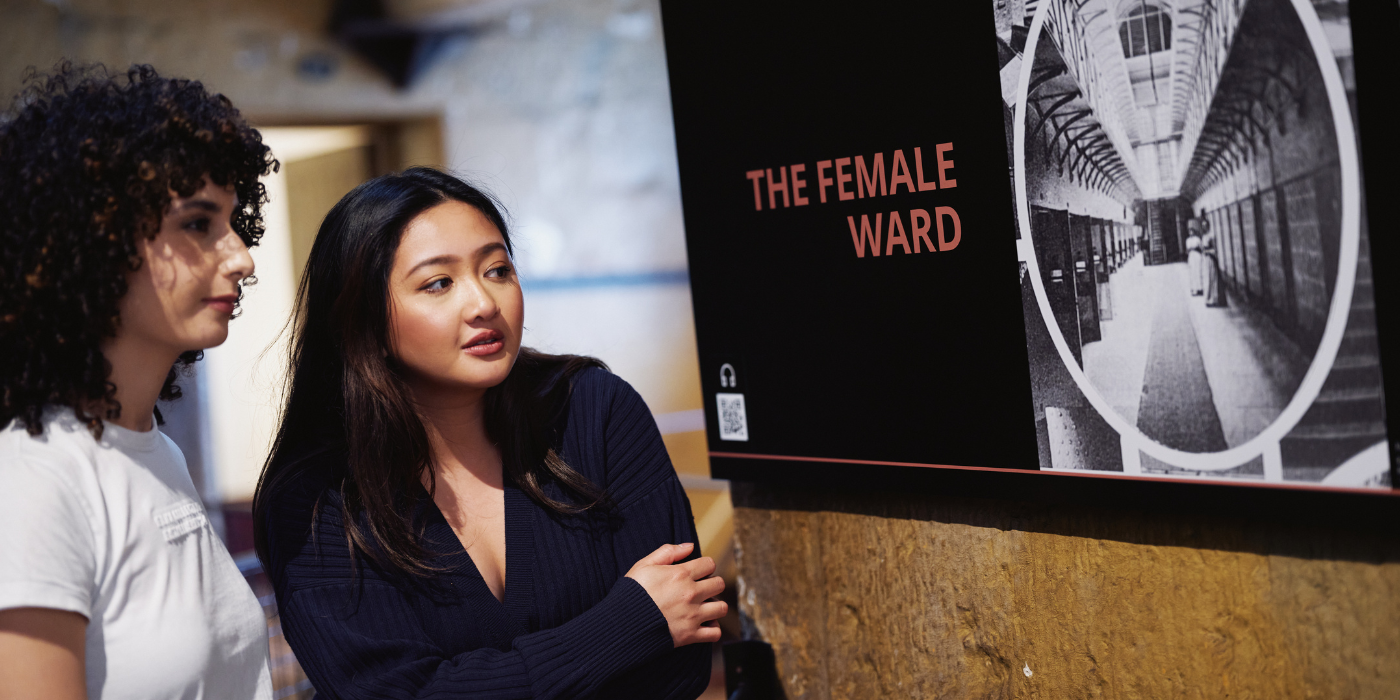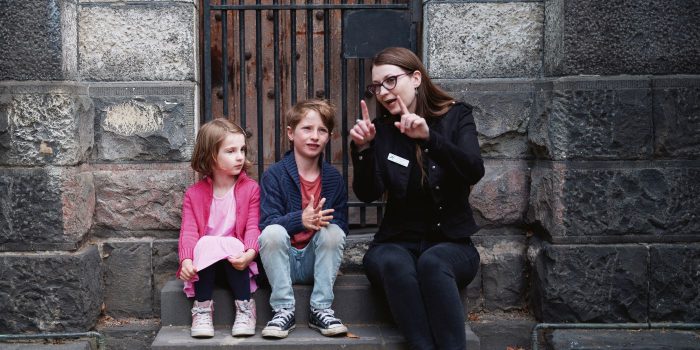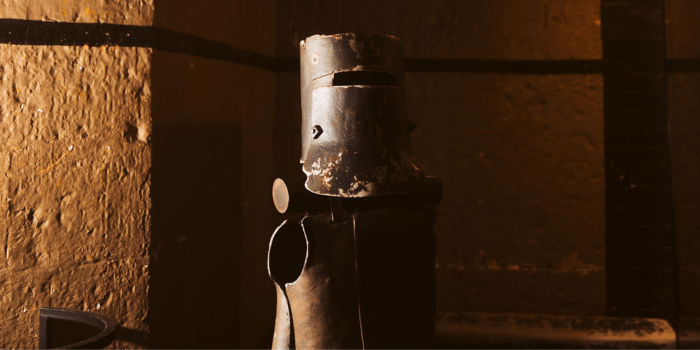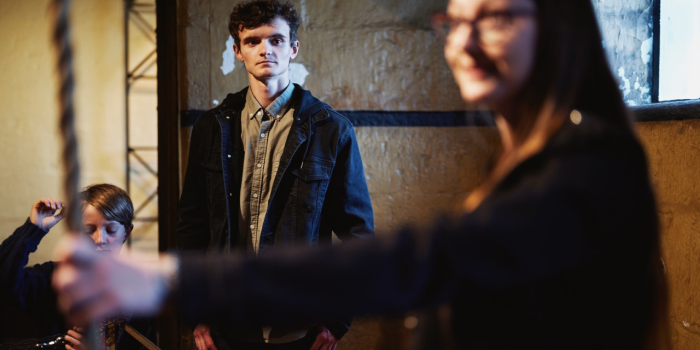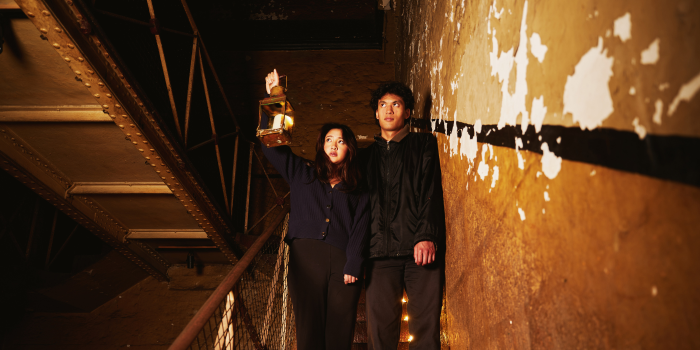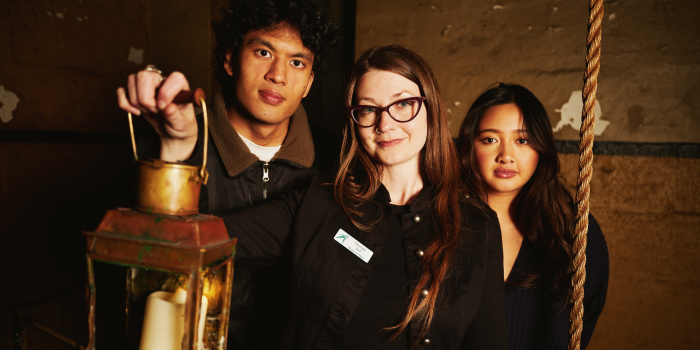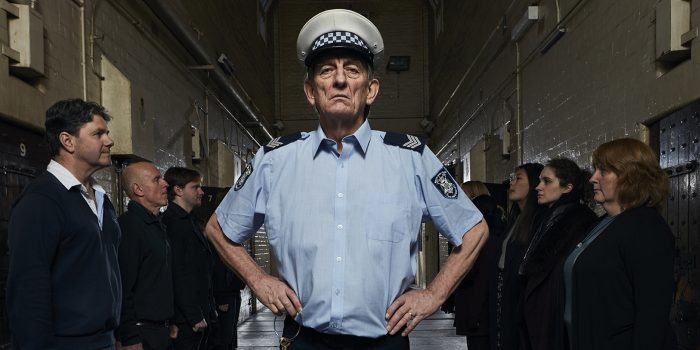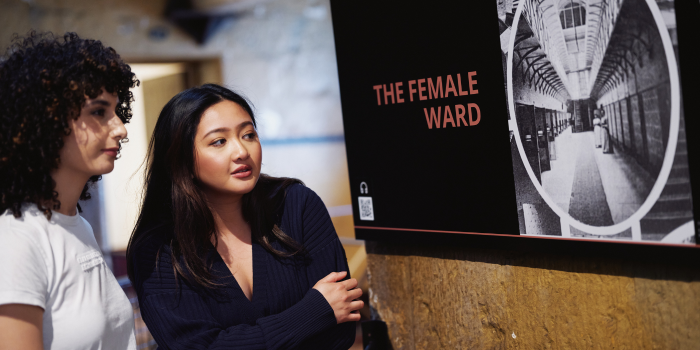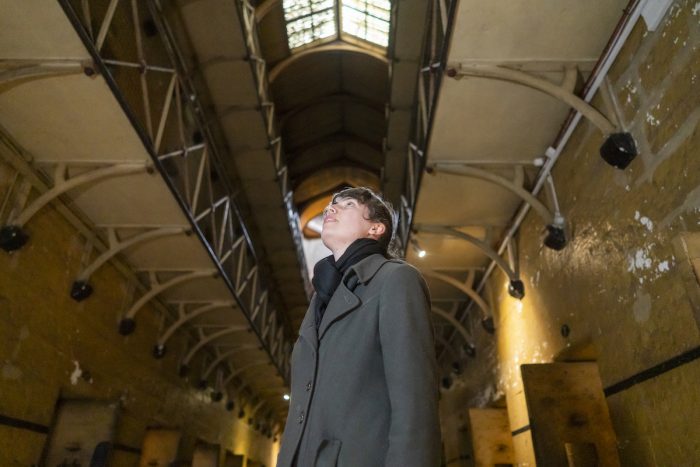As part of the upgrade to the Old Melbourne Gaol’s interpretation, the histories of women and children have been brought to life through new permanent panels. Today, the second floor features a suite of cells devoted to sharing their stories.
For decades, researchers, staff, volunteers, and academics have traced the experiences of women and children within the Gaol. Earlier displays acknowledged these histories, but this new installation places them firmly at the heart of the visitor experience. Beginning adjacent to the gallows, the narrative explores execution and female imprisonment, before concluding with the social welfare work of Dr John Singleton and the Salvation Army.
Before stepping inside, take a walk around the Gaol’s exterior. The original gate and courtyard provide a powerful reminder of what it was like for prisoners—women and children among them—arriving to serve their sentences. At the back of the site, fragments of whitewashed walls and sealed doorways are the last remnants of the Female Ward, demolished in the 1930s. Until that wing was built, women were housed alongside male prisoners. Following its demolition, the Female Prison at Pentridge became the main site of incarceration for women and children.
This permanent exhibition ensures these often overlooked stories remain an essential part of the history of the Old Melbourne Gaol.


